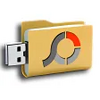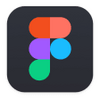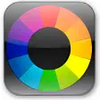Design software that allows you to create virtual electronic designs that can be replicated physically
Design software that allows you to create virtual electronic designs that can be replicated physically
An Open-Source Gateway to Electronic Design
Fritzing stands out as a versatile, open-source software tailored for individuals passionate about diving into the world of interactive electronics design, be they educators, students, or hobbyists. This tool is engineered to facilitate the process of creating, documenting, and sharing electronic circuits, which serves as a powerful educational platform for those interested in physical computing and prototyping with Arduino and other electronic components.
Intuitive Design Interface
At the heart of Fritzing's functionality lays a user-friendly interface that caters to both novices and advanced users. It flaunts three primary workspaces that encompass the stages of electronic design:
- The Breadboard View aligns closely with the physical assembly of circuits, allowing users to replicate and plan their designs in a virtual environment, mitigating the risk of errors during the transition to actual hardware.
- Schematic View presents a more traditional electronic diagram format, utilizing standard symbolic representations that appeal to those who need to translate their breadboard designs into a universally recognized schematic.
- PCB View shifts focus towards the creation and layout of printed circuit boards, providing all the necessary tools and features to design professional PCBs, complete with exportable documentation for manufacturing purposes.
Each workspace is thoughtfully constructed to provide essential insights into electronic design, effectively bridging the gap between theoretical knowledge and practical application.
Resource-Rich Components Library
One of Fritzing's highlights is its extensive Part Library, which showcases a wide array of electronic components. Users can conveniently browse through different categories like 'All parts', 'Mine', and 'Core', simplifying the process of finding and integrating components into their projects. The library is particularly beneficial for those learning about electronics, providing a vast playground for experimentation.
The Part Inspector is another handy feature, offering users the ability to delve into the specifics of each component. This functionality enhances understanding and controls over the particulars of a circuit, ensuring that all aspects meet the desired specifications.
Customization and Community Contributions
Fritzing's adaptability is further amplified by its support for custom parts. Users can create new components by supplying essential data such as the part's name, icon, graphic, and vital attributes like label, description, properties, tags, and author. This ensures that even the most unconventional or newly released components can be incorporated into a design with relative ease.
Sharing and Collaboration
Another remarkable aspect of Fritzing is its emphasis on collaboration and knowledge sharing, critical for an educational environment. It facilitates sharing designs with others, enhancing its utility as a powerful collaborative platform for classrooms and workshops focused on electronic prototyping and design.
Current State of Software Development
It is important to note, however, that Fritzing's active development has slowed, with a smaller community of developers at the helm. While this does not diminish the software's current capabilities, potential users should be aware of the implications on long-term support and updates.
Pros
- Open-source and free to use
- Accessible interface for various skill levels
- Diverse viewing modes: Breadboard, Schematic, and PCB
- Comprehensive Part Library for extensive design options
- Community contributions and part customization
Cons
- Updates and active development are limited
- May not cater to the needs of very advanced users seeking industry-grade software
In conclusion, Fritzing's well-rounded design ecosystem promotes a deep understanding of electronic circuits and PCB design, encouraging learning and innovation. While future updates may be sparse, its current form offers a solid foundation for anyone interested in electronics and serves as a valuable educational resource.




